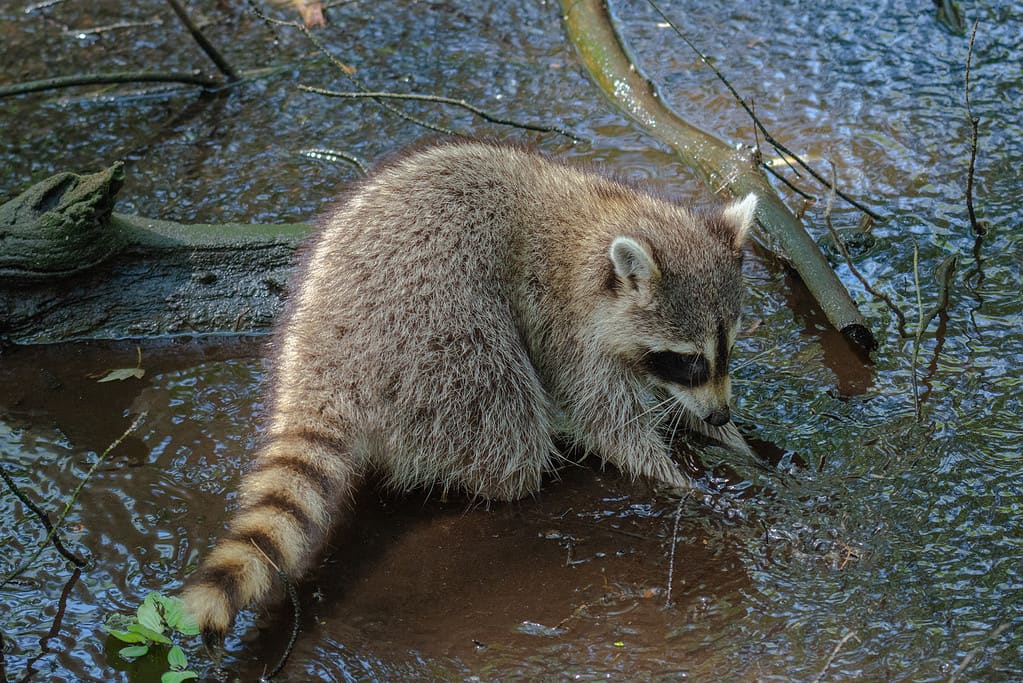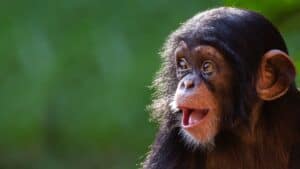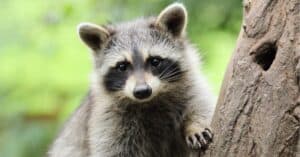Raccoons (Procyon lotor) in captivity are often observed dunking food items in water. This has led to the persistent belief that raccoons wash their food before eating it. Alternately, some scientists theorized they were just softening their food, possibly to make up for a natural lack of salivation. So, are raccoons, in fact, either washing their food or softening it? Or is there something else going on?
Do Raccoons Dunk Their Food in Water to Wash It?

Raccoons are nocturnal animals.
No, raccoons are not really washing their food when they dunk it in water. A classic study by the Zoological Society of London of their captive raccoons found no connection between what food was submerged and how dirty it was. For example, the food items that were arguably the ones in most need of washing, earthworms, weren’t washed at all! The study asserted that the action popularly known as “washing” should instead be referred to as “dousing” — and it was not a functional cleaning action.
Do Raccoons Dunk Their Food in Water to Soften It?

Raccoons eat plenty of hard foods too, like eggs stolen from a bird’s nest.
©iStock.com/Edwin_Butter
Although this was once another theory for the dunking behavior, the ZSL study also refuted this explanation. In addition to citing previous research that raccoons do, in fact, have well-developed salivary glands, their experiments found that dry objects were not doused any more frequently than wet objects were.
So Why Do Raccoons Dunk Their Food in Water?

Wild raccoons often forage in and around water.
©ad-e-motion/iStock via Getty Images
The ZSL study concluded the behavior was a fixed action pattern — that is, an instinctive behavioral sequence. The study suggested the dousing behavior serves as an outlet for the raccoon’s natural wild behavior of frequent foraging in and near water. However, a 1986 study in Somatosensory Research later offered an additional explanation for the dousing behavior. This study found that water is also an important stimulant for the raccoon’s sense of touch!
It is well-known that touch is a raccoon’s most important sense and that their front paws are chock full of nerve endings. However, these paws also feature protection by a thick outer epidermis. Wetting the skin on the paws makes this layer more pliable. This, in turn, significantly increases the receptiveness of the nerve endings, allowing for even greater sensitivity. That can help the raccoon gather important information about the object it is holding and thinking about eating! Such increased tactile sensitivity can be especially helpful when foraging at night or in murky water when food cannot be as easily seen.
Conclusion

Touch is the raccoon’s most important sense, and its already exceptionally sensitive front paws become even more so when wet!
©MyImages_Micha/iStock via Getty Images
Do raccoons really wash their food? No, raccoons are not actually washing their food when they dunk it in water. Nor are they softening it to make it easier to eat. Instead, this behavior, properly called dousing, increases their tactile sensitivity, allowing them to gather more information about what they are holding. In captivity, it also appears to be a fixed action pattern. This hard-wired activity serves as an outlet for the raccoon’s natural wild behavior of frequent foraging in and near water.
Thank you for reading! Have some feedback for us? Contact the AZ Animals editorial team.








